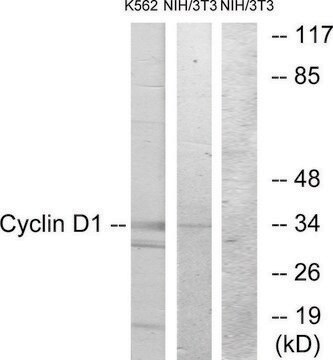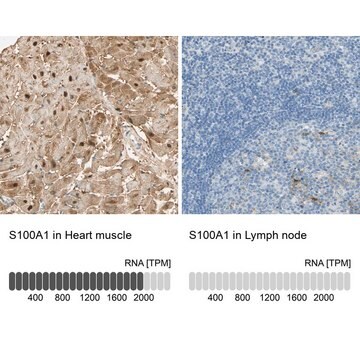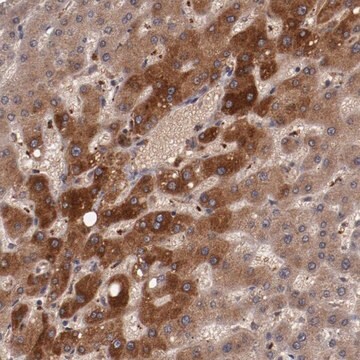ABN1653
Anti-Dysbindin
from rabbit, purified by affinity chromatography
Sinónimos:
Biogenesis of lysosome-related organelles complex 1 subunit 8, BLOC-1 subunit 8, Dysbindin-1, Dystrobrevin-binding protein 1, Hermansky-Pudlak syndrome 7 protein, HPS7 protein
About This Item
Productos recomendados
biological source
rabbit
Quality Level
antibody form
affinity isolated antibody
antibody product type
primary antibodies
clone
polyclonal
purified by
affinity chromatography
species reactivity
human, mouse, rat
technique(s)
immunocytochemistry: suitable
immunofluorescence: suitable
immunohistochemistry: suitable (paraffin)
immunoprecipitation (IP): suitable
western blot: suitable
NCBI accession no.
UniProt accession no.
shipped in
ambient
target post-translational modification
unmodified
Gene Information
human ... DTNBP1(84062)
General description
Specificity
Immunogen
Application
Immunohistochemistry Analysis: A representative lot detected Dysbindin in Immunohistochemistry applications (Ito, H., et. al. (2010). Mol Psychiatry. 15(10):976-86).
Immunofluorescence Analysis: A 1,000 dilution from a representative lot detected Dysbindin in P8 mouse brain hippocampus tissue (Courtesy of Dr Koh-ichi Nagata at Aichi Human Service Center).
Immunoprecipitation Analysis: A representative lot detected Dysbindin in Immunoprecipitation applications (Ito, H., et. al. (2010). Mol Psychiatry. 15(10):976-86).
Immunocytochemistry Analysis: A representative lot detected Dysbindin in Immunocytochemistry applications (Yuan, Q., et. al. (2016). Biol Psychiatry. 80(4):312-22).
Western Blotting Analysis: A representative lot detected Dysbindin in Western Blotting applications (Lee, S.A., et. al. (2015). J Biol Chem. 290(11):7087-96).
Immunoprecipitation Analysis: A representative lot detected Dysbindin in Immunoprecipitation applications (Lee, S.A., et. al. (2015). J Biol Chem. 290(11):7087-96).
Western Blotting Analysis: A representative lot detected Dysbindin in Western Blotting applications (Ito, H., et. al. (2010). Mol Psychiatry. 15(10):976-86).
Immunocytochemistry Analysis: A representative lot detected Dysbindin in Immunocytochemistry applications (Ito, H., et. al. (2010). Mol Psychiatry. 15(10):976-86).
Neuroscience
Quality
Immunohistochemistry Analysis: A 1:250 dilution of this antibody detected Dysbindin in human cerebellum tissue.
Target description
Linkage
Physical form
Storage and Stability
Other Notes
Disclaimer
¿No encuentra el producto adecuado?
Pruebe nuestro Herramienta de selección de productos.
Storage Class
12 - Non Combustible Liquids
wgk_germany
WGK 2
flash_point_f
Not applicable
flash_point_c
Not applicable
Certificados de análisis (COA)
Busque Certificados de análisis (COA) introduciendo el número de lote del producto. Los números de lote se encuentran en la etiqueta del producto después de las palabras «Lot» o «Batch»
¿Ya tiene este producto?
Encuentre la documentación para los productos que ha comprado recientemente en la Biblioteca de documentos.
Nuestro equipo de científicos tiene experiencia en todas las áreas de investigación: Ciencias de la vida, Ciencia de los materiales, Síntesis química, Cromatografía, Analítica y muchas otras.
Póngase en contacto con el Servicio técnico





